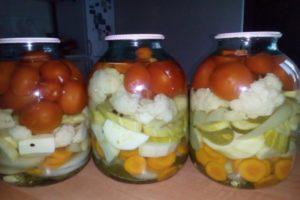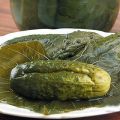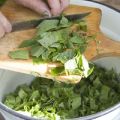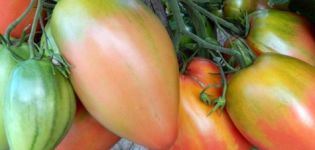Dolma Canned Grape Leaves Recipes
Dolma in grape leaves is rightfully considered one of the most popular dishes in the countries of the Caucasus and Central Asia, and is revered by gourmets far beyond the indicated territories. Recipes for preserving grape leaves for dolma are not complicated, but an inexperienced housewife can do it.
The highest quality raw materials for making dolma are harvested during the flowering of grapes. Young juicy leaves contain a large amount of microelements valuable for the human body. In spring, they usually cook from freshly harvested raw materials, and during winter, summer and autumn - dolma from pickled grape leaves. Following the recipes, canned grape leaves for dolma do not lose their quality for a long time.
Procurement methods known today
In eastern countries, grape leaves are often used in cooking, and now they are beginning to gain popularity here. In addition to their pleasant taste, they also affect the normalization of blood circulation, help to cope with varicose veins and swelling.
It is permissible to harvest grape leaves for the winter with several types of conservation. All are suitable for use in the walls of the house. Most Popular:
- freezing;
- pickling;
- salting;
- preparation with dry salting;
- dry canning method.
All these recipes allow you to preserve products throughout the year. Particular attention is paid to the state of the harvested raw materials.
It is believed to be most suitable for harvesting grape leaves for the winter white-fruited varieties. They have softer leaves with a smoother surface, which emit more aroma during cooking, giving the dish a unique flavor.
Freezing
This preservation method is pretty quick and easy. Almost all vegetables after deep freezing can be used for food, while maximally preserving their properties and valuable trace elements for humans. The main condition is the availability of a suitable freezer.

Before preparing frozen raw materials, it is necessary to cut off young foliage, which is not damaged, together with cuttings, wash them and wipe them with a clean cloth. Then collect in small piles of 10 pieces, twist with a tight tube, wrap with cling film and, putting everything in a large plastic bag, send it for storage in the freezer.
When required, they must be defrosted by pouring boiling water over them. Aroma and taste are not lost. When storing, it is necessary to ensure that moisture does not remain on the plant, which can disrupt the storage process.
Salting
This type of harvesting grapes for dolma provides 2 options. The first is the possibility of salting for a short time, under a nylon cover, and the second option allows you to store salted leaves for a rather long period.
Option number 1
Before pickling grape leaves for dolma, rolls are wrapped from them. Then it is placed in a prepared container and poured with a steep brine (for 1 liter of water - 100 g of salt). The container is covered with a plastic lid and taken to the basement for storage.
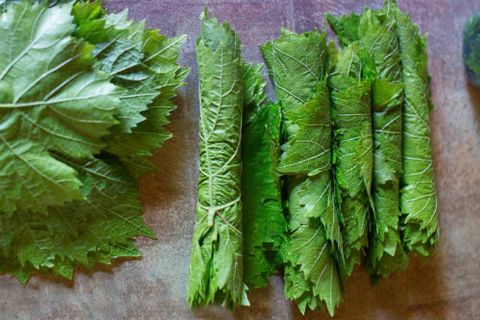
Immediately before cooking, they are soaked in warm water. This will remove excess salt. With this method of conservation, salty grape leaves retain their aroma, but lose some useful properties.
Option number 2
Another type of salting for the winter for dolma involves preheating them by pouring boiling water into a container. You can fill them twice with an interval of 5 - 10 minutes. Then pour in boiling brine (1 tbsp. L salt per 1 liter of water) and roll up the jars. These salted leaves do not need to be soaked before use. Some advise salting with spices. In this case, 1 tsp is added to the brine. salt and mustard powder, 2 - 3 black peppercorns per 1 can.
In eastern countries, barrels are used to preserve grape leaves for the winter.
Pickling
This method of harvesting dolma for the winter is the most reliable and proven for years, does not require large expenses. Although more laborious than simple salting or freezing, the result is excellent. Pickled grape leaves for dolma, acquiring a pleasant sourness and aroma of spices, become more piquant.
Washed leaves are folded in 10 pieces and rolled into tight rolls. Then they are stacked in jars and filled with boiling water. After 5 minutes, the water is drained and boiled again. Grape leaves, twice doused with boiling water, are pickled and hermetically closed with metal lids. The marinade is prepared in the following proportions: 1 liter of water, 1 tbsp each. l. sugar and salt and 2 tbsp. l. vinegar 9%. You can add your favorite spices if desired.
If a twisted grape leaf tube is trying to unwind, it can be secured by tying it with a thread or punctured with a toothpick.
Canning
The fact that the leaves are dry canned may come as a surprise. Such recipes consist in sprinkling them with table salt. Performing step by step such a recipe for pickling grape leaves, first they pour 10 pieces of salt folded together. Then the tightly tamped jars are placed in a pot of water for sterilization.

After 10 - 15 minutes of boiling, you can tightly close the lids. This way of preserving allows you to preserve not only the natural aroma, but also useful properties.
Dry ambassador
This is an unusual way that demonstrates reliability. You don't have to spend too much time. Prepared (washed and dried) leaves are folded into piles, sprinkled with salt and rolled up. The finished packages are tightly packed in a plastic bottle. Stopper the filled container and take it to a dark, cool storage area.
Pickling with tomato
Those who like to experiment can try another method by pickling them in tomato juice. The amount of juice is taken in the calculation of 300 ml per 1 liter can of conservation.
Before pickling grape leaves for dolma, the plucked leaves are placed in a bowl of cool water for about 1 hour. Then they are taken out and, having folded 10 pieces, are twisted into a roll. A sterile jar filled with them is first poured with boiling water, and after a quarter of an hour the water is drained.
At this time, slightly salted tomato juice is boiled on the stove. It must be boiled thoroughly (about 30 - 40 minutes). After that, pour it into jars and roll up the lids.Each jar is turned upside down and covered with a blanket. They can be removed for storage after they have cooled completely.
